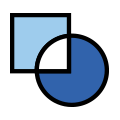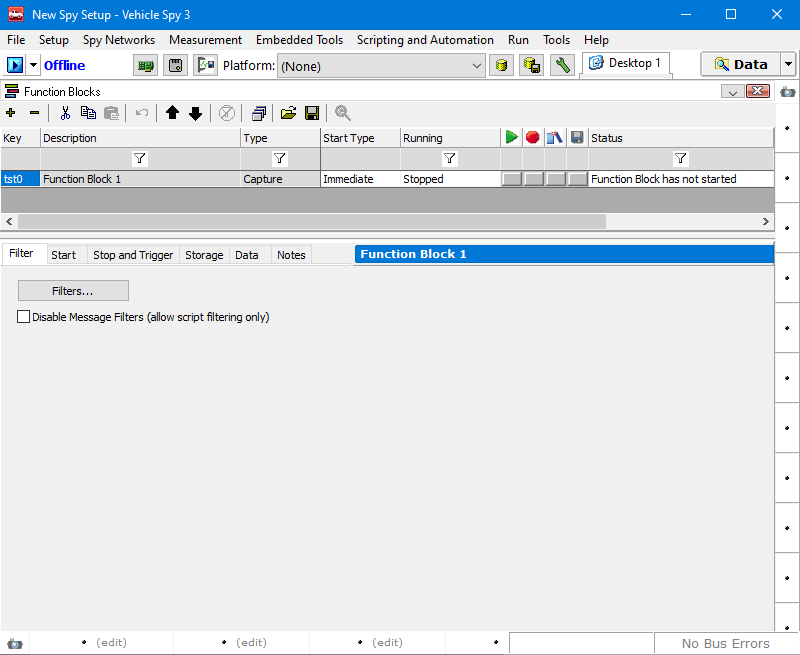 Capture Type Function Block
Capture Type Function Block
 Capture Type Function Block
Capture Type Function Block
Capture type function blocks (commonly refered to as capture blocks) allow the ability to catch data as it comes over the network and save it to a buffer file for future analysis. A host of options and parameters split across multiple tabs allow the function block to be tailored to any use case. These blocks allow anything from a simple manual capture of a small amount of data, to sophisticated setups that record precise message sets based on custom filtering and trigger logic.
Table 1 describes just a few of the many ways that capture blocks can be used. In each case the application is described and a brief summary is provided of the capture block settings that might be used in a setup; these are presented in the same order that capture block tabs appear. Of course these are only samples and settings can be combined in almost any way that is required.
| Application Description | Buffer | Start Type | Stop and Trigger Options | Storage |
|---|---|---|---|---|
| Save current data in a large, unfiltered buffer, possibly triggered by a hotkey. | No filtering | Start Immediately | Collect in a circular buffer, with large buffer | Manual save |
| Save a new buffer file at a periodic rate. (Warning: This can fill up storage if set up incorrectly!) | No filtering | Start Immediately | Collect in a circular buffer, with very large buffer | Save when expression is true |
| Create a small, filtered buffer file, triggered by a joystick button. | Filtering | Manual Start | Collect in a one-shot buffer, with small buffer | Automatically save when complete |
| Capture data before and after a hotkey click. | Filtering | Start Immediately | Collect before and after a manual trigger, with small buffer and large post-trigger buffer | Automatically save when complete |
| Store a large amount of data before an event that occurs very quickly. | No filtering | Start Immediately | Collect before and after a trigger expression, with large buffer and small post-trigger buffer | Automatically save when complete |
| Capture data that occurs between two events. | Filtering | Use Start Expression | Collect in a circular buffer, with large buffer | Save when expression is true |
| Capture data filtered using a script, with start, trigger and save expressions for ultimate flexibility. | Filtering using script | Use Start Expression | Collect before and after a trigger expression, with mid-sized buffer and post-trigger buffer | Save when expression is true |
Create a new capture block by clicking the  button on the far left of the
function block toolbar and then select Capture from the popup menu. Vehicle Spy will create a default capture block
as shown in Figure 1, with the Filter Tab selected.
button on the far left of the
function block toolbar and then select Capture from the popup menu. Vehicle Spy will create a default capture block
as shown in Figure 1, with the Filter Tab selected.

Like all function blocks, a new capture block will appear in the function block list near the top of the function block pane. The function blocks can be renamed by double-clicking on the default name (Function Block 1) and entering a more descriptive name.
The name entered in the function block list also appears in blue in the function block setup area for greater clarity.
As shown in Figure 1, capture type function blocks have their parameters divided into five tabs. The following is a brief description of these tabs with links to pages covering each in more detail: